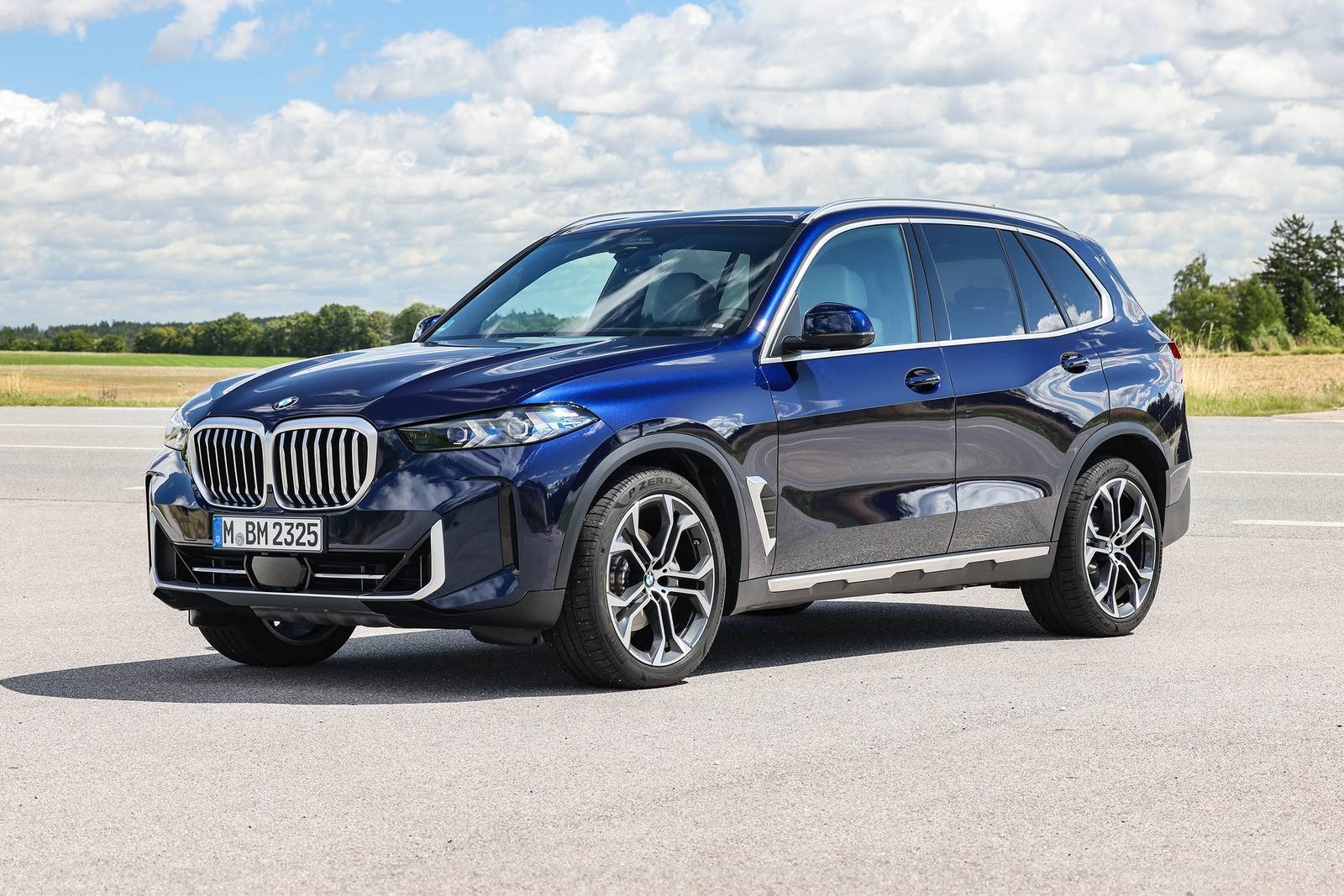When choosing a sport utility vehicle in today’s car market, people are now paying close attention to the electronics that come with it. Features like touchscreen interfaces, parking sensors, navigation systems, digital dashboards, and wireless charging now play a big role in what makes a vehicle desirable.
These modern systems are no longer seen as extras. Many buyers expect them as standard, especially when they are paying a premium price. But as these features keep increasing, some automakers deliver better quality than others.
Some SUVs impress drivers with smooth infotainment setups, reliable Bluetooth pairing, user-friendly controls, and software that hardly ever has bugs. These vehicles make every trip enjoyable, whether it is a daily school run or a weekend road trip.
However, there are certain SUVs with electronics that frustrate owners. Faulty displays, slow software responses, random screen freezing, or poor integration with smartphones make the driving experience less enjoyable. In some situations, these problems can even affect safety or the basic functionality of the car.
Because of how much electronics now matter in vehicles, drivers should not ignore how dependable or unstable the tech systems are. This list focuses on two major groups. The first group highlights five SUVs that are praised for having solid electronics.
These give drivers confidence that their tech features will work properly without stress. The second group shows five SUVs that receive frequent complaints about their electronics.
These are the ones where users report multiple faults, poor system reliability, and sometimes even regret their purchase because of how frustrating the systems can be.
Anyone planning to buy an SUV should take time to learn which models are known for smooth tech features and which ones are known for giving their users constant headaches. With this breakdown, buyers can avoid unpleasant surprises and go for options that offer peace of mind.
5 SUVs With Great Electronics
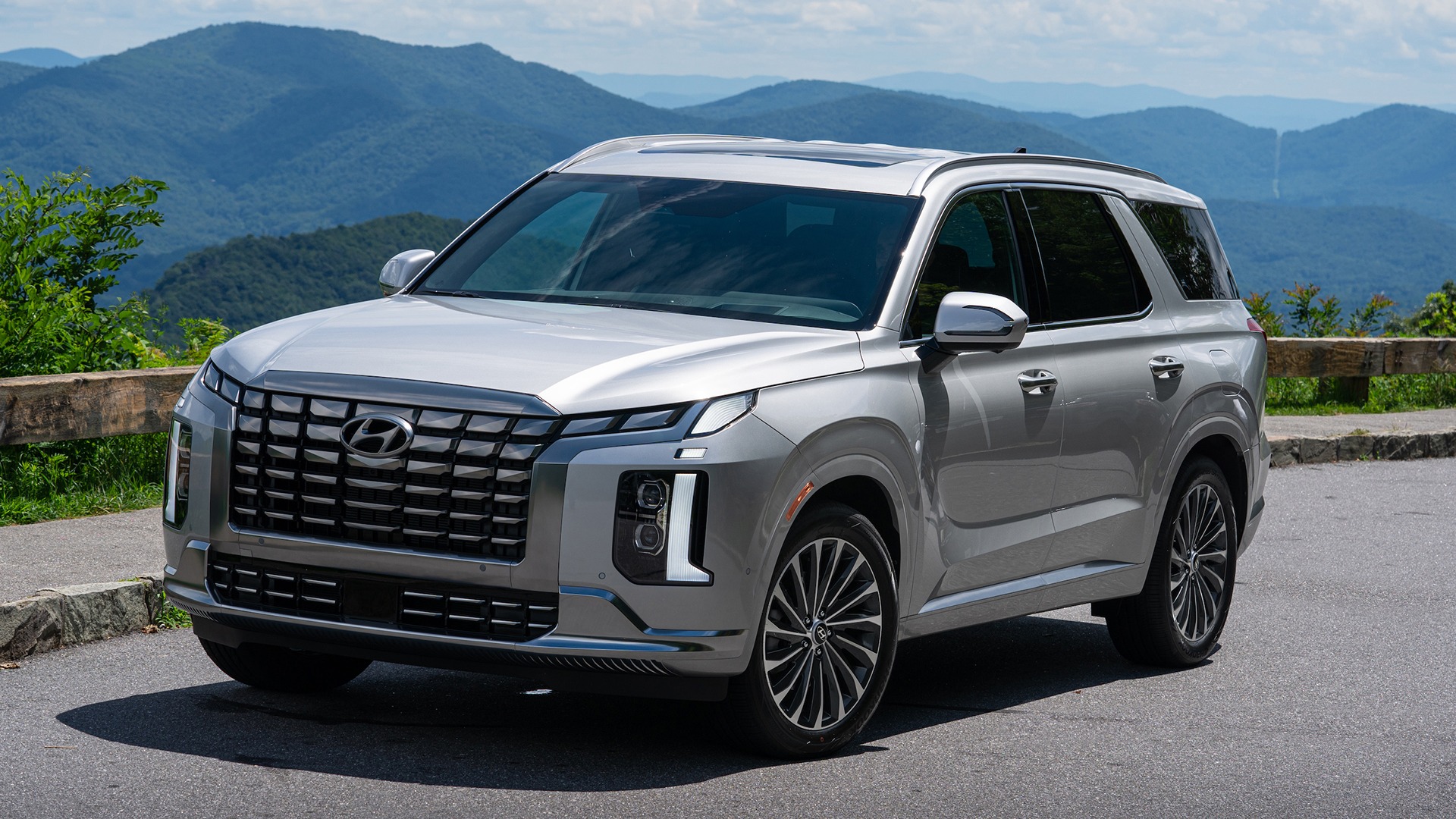
1. 2023 Hyundai Palisade
Among recent midsize SUVs, the 2023 Hyundai Palisade has impressed many drivers with how refined its electronics are. This vehicle offers a clean layout and quick response across all the tech features that come as standard or optional.
Many owners have praised the 12.3-inch digital gauge cluster, the sharp and responsive touchscreen, and the well-arranged physical buttons placed below the screen for climate and audio controls. These buttons make it easier for drivers to avoid the stress that often comes with full-touch systems.
The Palisade’s infotainment system supports both Apple CarPlay and Android Auto, and users say that pairing is fast and consistent. There are no long waiting periods or confusing error messages during setup.
Whether it’s streaming music or following GPS directions, the system performs steadily. Hyundai has also made sure that the interface is simple to understand, which helps users of all ages. Many owners do not need to read the manual before they can operate the basic tech functions.
Wireless phone charging is available in most trims, and it works smoothly without overheating or cutting off. USB ports are available for every row, so no passenger feels left out during long drives.
In addition to that, the Palisade comes with a Driver Talk system that allows the driver to speak directly through the car speakers to passengers in the third row. This feature reduces the need to shout or turn around while driving.
Another area where Hyundai did well is with the Smart Cruise Control and Highway Driving Assist. These electronic safety systems help the driver maintain lane position and speed based on traffic conditions.
Drivers often comment on how these features reduce stress during longer journeys. Hyundai’s software rarely shows bugs, and updates have been known to add features rather than fix problems.
The voice recognition system also works better than many in its class. It picks up common commands without needing to repeat them many times. From adjusting the temperature to changing radio stations, the car responds with speed. These small details help the Palisade deliver a tech experience that feels modern, thoughtful, and free from stress.
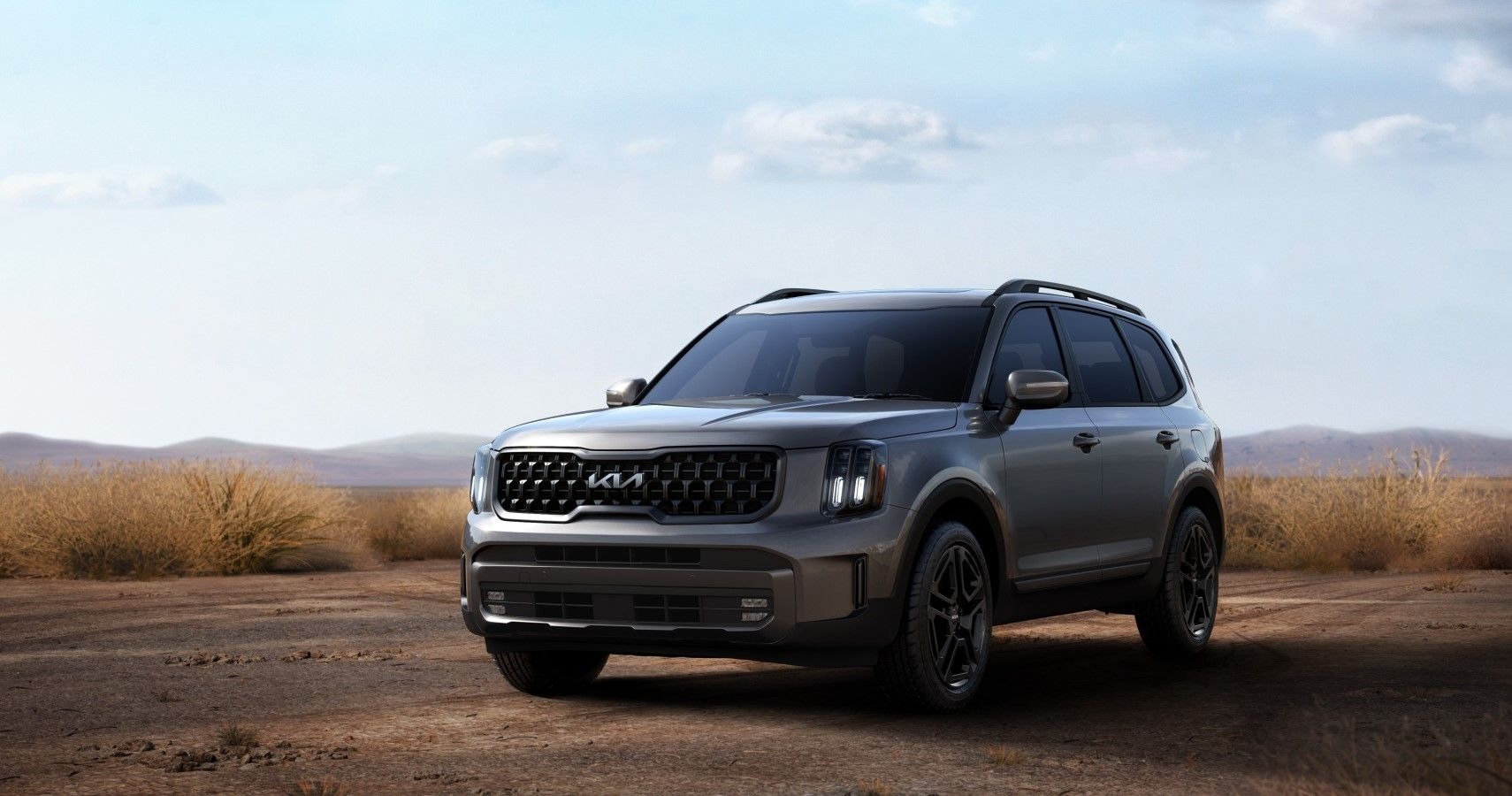
2. 2023 Kia Telluride
The Kia Telluride has become one of the most appreciated SUVs in recent years, not just because of its size and design but also because of how well its electronics function. The 2023 version includes updated technology that feels both easy to use and very reliable. Many families say that they feel confident using Telluride’s tech features even during long-distance travel.
One standout element is the large touchscreen, which responds quickly and does not freeze. The software is simple and makes it easy to switch between different menus. Drivers do not get confused or stuck trying to find certain settings. Even those who are not very used to new tech can figure it out within minutes.
The SUV supports both Android Auto and Apple CarPlay, but unlike some other models, the Telluride does not bring connection problems or audio lag. The wireless charging pad has a cooling fan built in, which helps keep phones from getting too hot. This detail shows how Kia has considered practical daily usage while designing its electronic systems.
The digital instrument cluster presents clear information about driving speed, lane position, and fuel economy. In addition, the head-up display is another strong feature that projects major information right onto the windshield, allowing drivers to stay focused on the road. This kind of visibility makes driving safer without distracting the person behind the wheel.
Multiple USB ports are located in all three rows, so charging devices is never a challenge. Voice command features are also strong, and users find that they can change settings by simply speaking, without having to press buttons. The surround-view camera gives a full 360-degree view around the car, which helps greatly during parking.
Another thing many people appreciate is that software updates come through without delays, and they do not remove features. Instead, updates improve the car’s operation. Many drivers say they rarely experience bugs or freezes with the system, even after months of use.
With the 2023 Telluride, Kia has built a vehicle that meets modern technology expectations without overcomplicating anything. Every feature feels ready to work from the moment the engine starts.
Also Read: 5 Cars With Fast Climate Response vs 5 With Slow HVAC
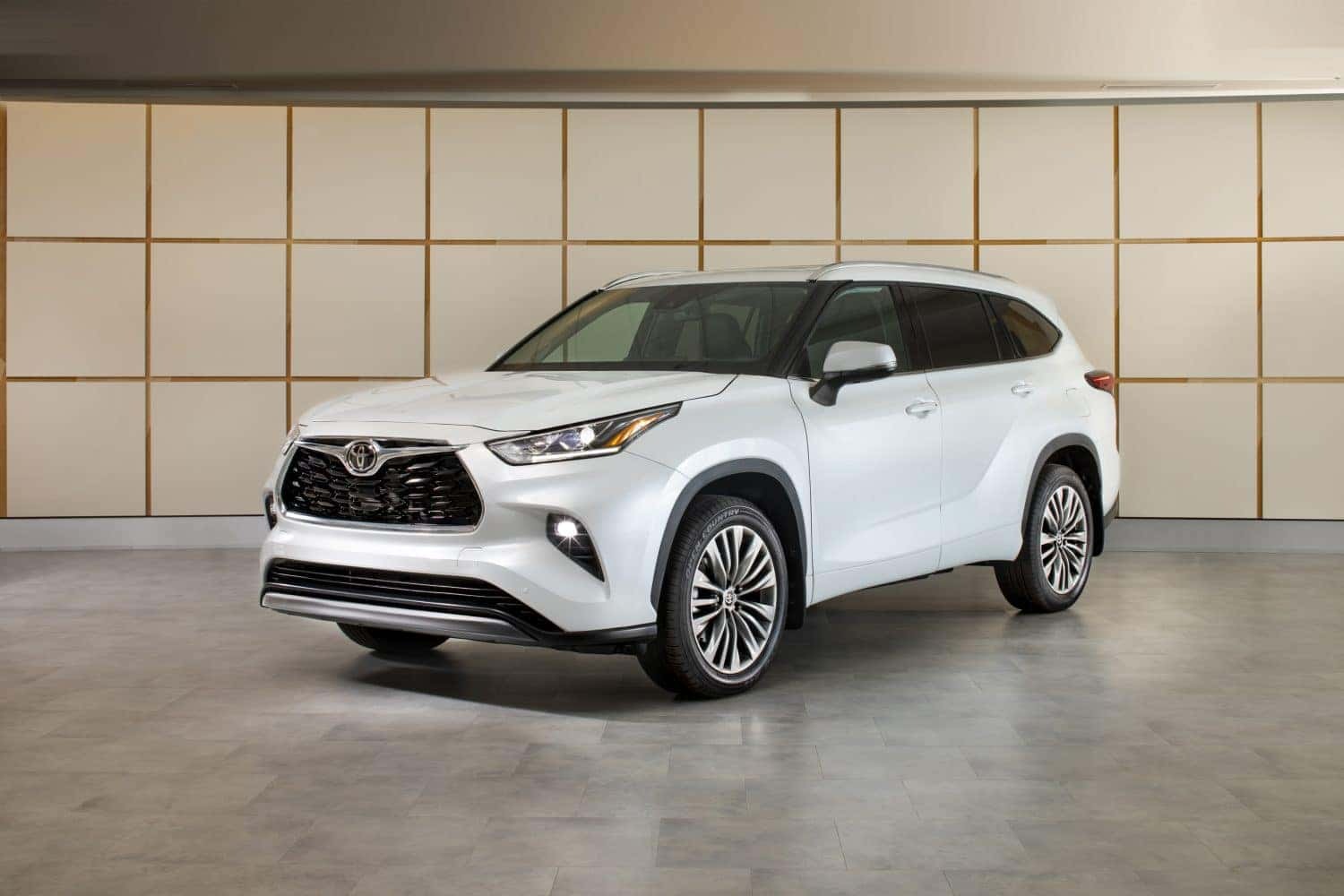
3. 2023 Toyota Highlander
The Toyota Highlander has kept a good reputation among buyers who want an SUV with dependable electronics. In the 2023 edition, Toyota took several steps to update its technology features while still making sure that the systems perform well every time. Unlike some models where screens go blank or systems restart randomly, the Highlander shows steady operation.
This SUV now comes with a standard 12.3-inch touchscreen in the higher trims, and users enjoy how easy it is to guide the menus. The response time of the screen is quick, and the display is crisp both in daylight and at night. It works well even when wearing gloves, which helps in colder areas.
Android Auto and Apple CarPlay work wirelessly in this model, and most drivers mention that pairing a phone takes only a few seconds. Streaming music, using voice-to-text, and following map directions happen without any lag. The voice command feature also understands natural speech better than older Toyota models.
Another area where Toyota did well is in the digital gauge display. It shows driving data clearly, and drivers can customise what they want to see. It helps keep the cabin neat and free from visual stress.
Safety systems like lane-keeping assist, radar cruise control, and blind-spot monitoring also work smoothly. Drivers mention that alerts are not too loud or too frequent, making them more helpful than distracting.
In the Highlander, Toyota made it possible for software updates to come over the air. This allows the systems to stay current without requiring trips to the dealership. Even after updates, most users report that features remain stable without new issues appearing.
The sound system, which can be upgraded to JBL in higher trims, also gives good audio performance. Combined with quiet cabin insulation, listening to music or podcasts is more enjoyable. USB-C ports and traditional USB outlets are well-placed across the cabin, so every passenger can stay charged without stretching cables.
The Toyota Highlander shows that you do not need flashy systems to have excellent electronics. What it offers is consistency, simplicity, and trust that the systems will work when you need them.
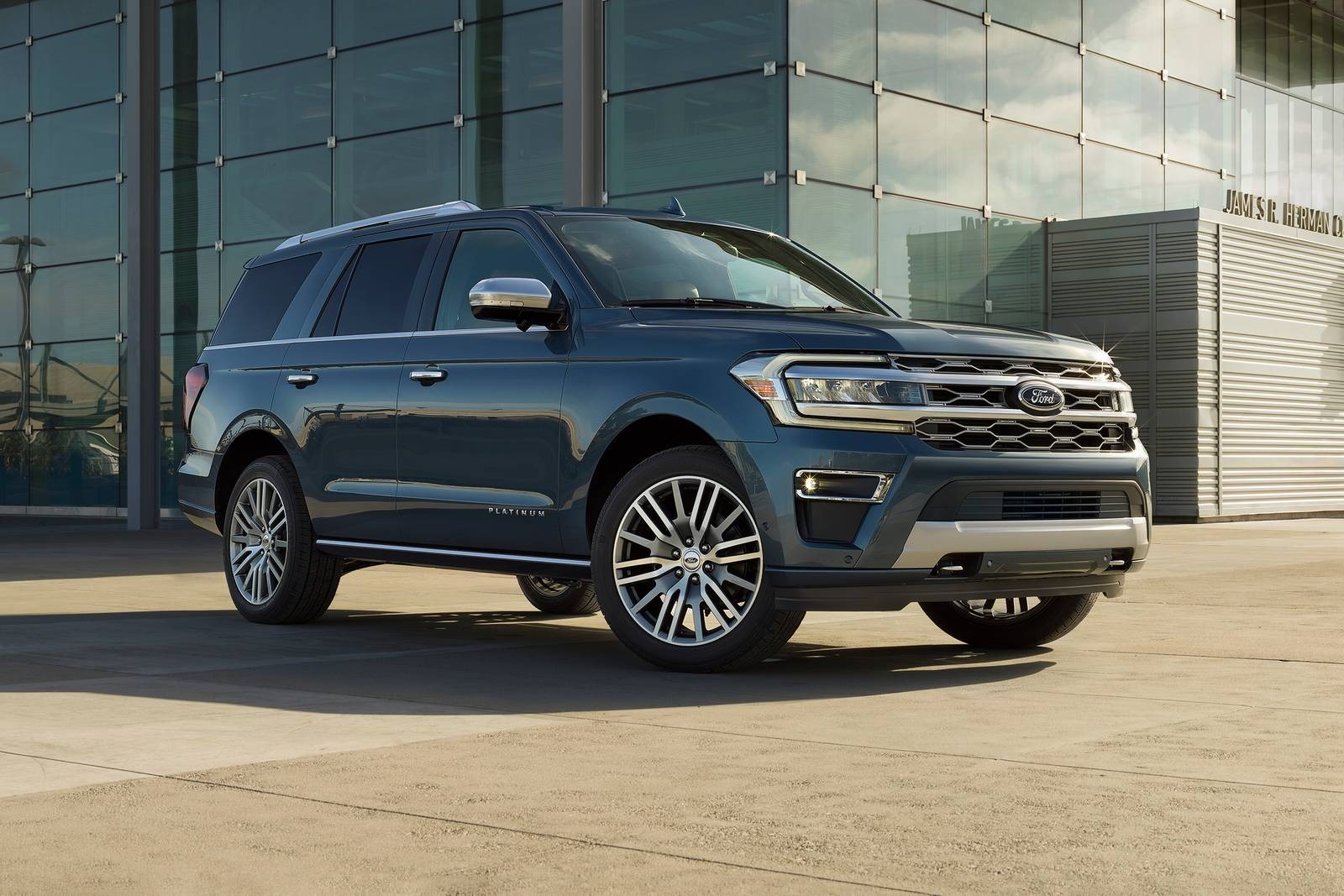
4. 2023 Ford Expedition
The 2023 Ford Expedition stands out as one of the full-size SUVs that blends comfort with smart technology. For a vehicle of its size, Ford has taken steps to make sure the electronics inside are not just functional but also easy for every user in the car to enjoy. From the moment the driver starts the engine, the digital systems kick in smoothly without delays or error signals.
This SUV comes with the SYNC 4 infotainment system, which runs on a 12-inch touchscreen by default and can be upgraded to a huge 15.5-inch vertical display in the higher trims.
The interface has been designed in a way that does not overwhelm the driver, even with the number of functions available. Menu layouts are arranged clearly, and the graphics respond quickly to touch without lagging.
Wireless Apple CarPlay and Android Auto connect almost instantly, and drivers have said that they do not experience repeated disconnections. Whether using maps, streaming audio, or sending messages with voice control, the system works the way people expect. Ford also included wireless updates, so new features and software improvements can be added without visiting the dealer.
Passengers in the second and third rows are not left out when it comes to charging. There are several USB ports in all rows, along with a 110-volt outlet and available rear-seat entertainment options. This makes the Expedition a great choice for long trips, especially with kids who want to stay occupied.
Voice recognition works smoothly, and it understands commands in regular English without needing robotic instructions. The digital gauge cluster presents data like towing information, fuel range, and tire pressure in clear detail. Adaptive cruise control and other driver-assist tech operate without hiccups, even when driving through heavy traffic.
Owners of the Expedition rarely complain about system crashes or frozen displays. Ford seems to have tested the electronics well before launching this version, and the effort shows in daily use. With all these features working in sync, the Expedition delivers a well-rounded tech experience inside a big, powerful SUV.
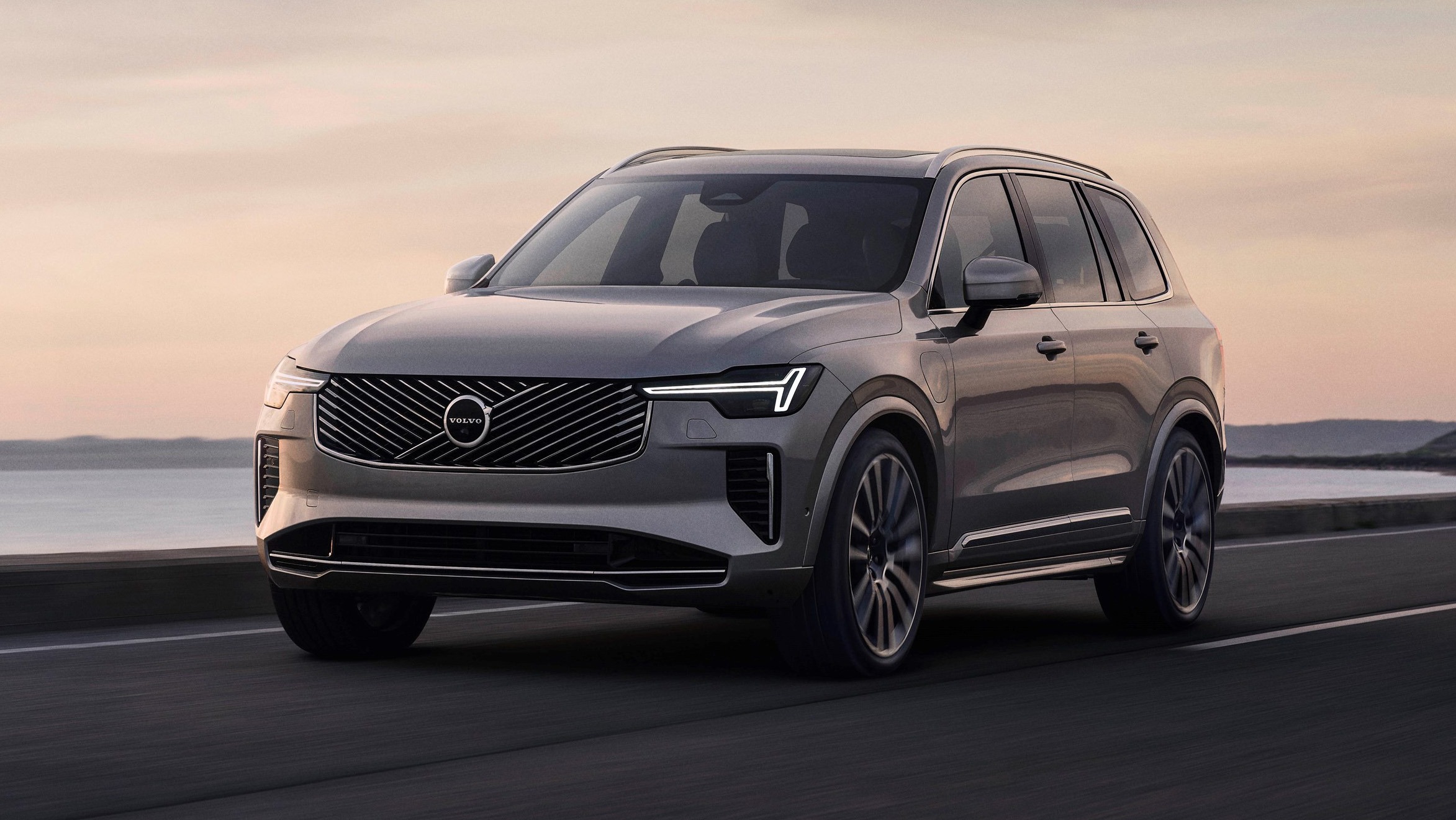
5. 2023 Volvo XC90
When it comes to luxury midsize SUVs, the Volvo XC90 has continued to earn praise for its quiet cabin and advanced electronics that rarely disappoint. The 2023 edition maintains this tradition with updates that improve both design and function. Volvo has taken a thoughtful approach, offering clean visuals, voice-friendly controls, and fast processing that help the driver stay focused.
The portrait-style touchscreen at the center of the dashboard makes it easy to view maps and adjust settings. Unlike many other vertical setups, this one does not lag or freeze. Its operating system is powered by Google-based software, giving it access to Google Maps, Assistant, and Play Store apps, all integrated into the main screen.
Pairing with smartphones is smooth, whether through Android Auto or Apple CarPlay, and many drivers say that voice commands work just like speaking to a smart speaker. You can ask for directions, make a call, or play music without repeating yourself or pulling over.
The digital instrument panel behind the steering wheel is also easy to read. It shows only what is necessary, avoiding clutter while still giving full control to the driver.
From speed information to turn-by-turn directions, everything is where it needs to be. The head-up display projects data clearly onto the windshield and is visible even in strong sunlight.
Even the safety electronics inside the XC90 operate without fuss. The Pilot Assist feature helps with lane centering and adaptive cruise, and most drivers find that the vehicle makes small corrections without jerky movements. Emergency braking and collision alerts respond on time, and they rarely show false warnings.
USB-C ports are available in every row, and the wireless phone charging pad performs steadily without overheating. Rear-seat passengers also benefit from a climate control touchscreen, which is not common in other SUVs.
The electronics inside the XC90 are not just premium in appearance but also perform with the type of calm and reliability people expect from a high-end SUV. For buyers looking for advanced systems that do not require constant troubleshooting, this model ticks all the right boxes.
5 SUVs That Fall Short When It Comes To Electronics

1. 2023 Jeep Grand Cherokee
While the Jeep Grand Cherokee has a strong reputation for off-road strength and luxury finishes, many users have expressed serious concerns about its electronics. The 2023 model tries to improve its tech offering with the Uconnect 5 system, but this update has introduced new challenges instead of solving the older ones. The interface is designed to be fast and simple, but several drivers report that it does not perform well after a few months of use.
Owners often mention lag between touching the screen and getting a response. In some cases, the system freezes completely, forcing a restart. For a vehicle in its price range, this kind of issue causes frustration, especially when navigation stops working mid-journey or phone connections are lost.
Bluetooth pairing is another issue. While it may connect during initial setup, many users say it disconnects during calls or refuses to stream audio without delay. These are problems that people do not expect from a modern SUV, especially one that markets itself as refined and connected.
Voice commands are also inconsistent. While the system sometimes picks up commands correctly, it often struggles to understand natural speech. Drivers find themselves repeating basic instructions or giving up altogether. This problem becomes worse during calls or when trying to input addresses.
Over-the-air updates are supposed to improve performance, but many owners complain that updates arrive late and sometimes worsen the system. After certain updates, drivers have noticed slower responses or missing settings. For families who rely on rear-seat screens, issues with streaming apps or syncing can turn simple drives into stressful experiences.
Jeep also includes advanced safety features, but users report that alerts come too frequently or at the wrong time. Emergency braking might activate unnecessarily, or lane warnings could beep even when driving straight.
The Grand Cherokee has a strong engine lineup and stylish design, but the electronics inside it have failed to deliver the experience people expect. For those who value digital reliability, this SUV may fall short of expectations.
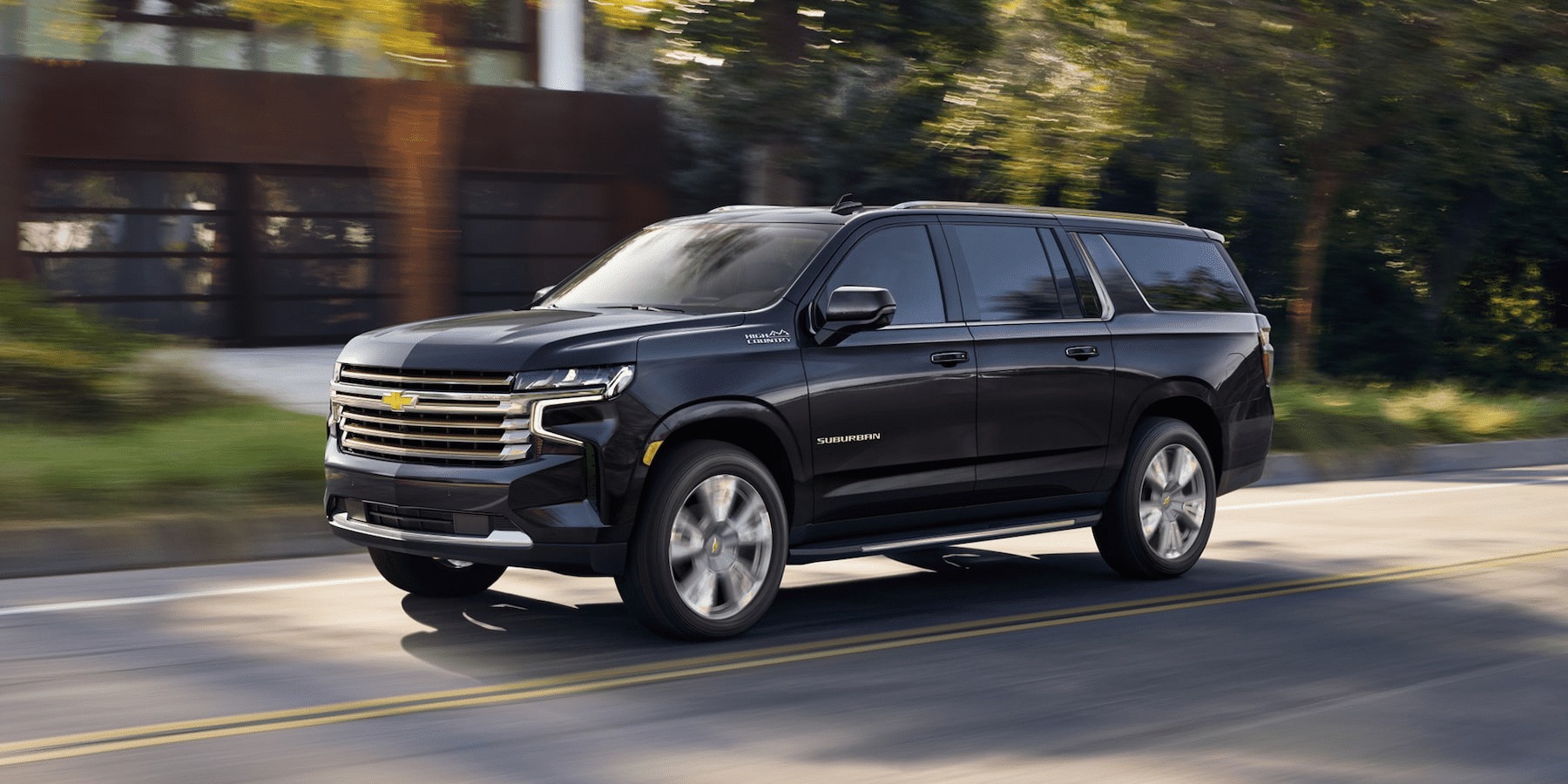
2. 2023 Chevrolet Suburban
The Chevrolet Suburban has always been known for its size and comfort, but the 2023 version struggles when it comes to the quality of its electronics. Even though General Motors fitted this large SUV with plenty of modern features, many users have reported that these systems do not work as smoothly as they should. For a vehicle often used by large families or business owners, tech problems can quickly become an everyday frustration.
The 10.2-inch central touchscreen is attractive at first glance, but users have pointed out issues such as system lag, screen freezing, or slow menu transitions. Sometimes, when switching from one function to another, the screen becomes unresponsive and needs a restart. These problems become more noticeable during longer trips, especially when the infotainment is being used continuously.
Bluetooth connectivity is another area where the Suburban struggles. While it does offer wireless Apple CarPlay and Android Auto, several owners mention that these systems disconnect mid-use or simply fail to launch. During phone calls or while streaming media, the connection might drop suddenly and return only after restarting the vehicle.
The rear-seat entertainment system, which should be a selling point in a family SUV, also receives plenty of complaints. Users have faced issues like video lag, audio that goes out of sync, or screens refusing to respond to commands. This becomes very frustrating for parents with children who rely on those systems during long journeys.
Voice recognition does not offer much help either. Several users feel that the system has trouble understanding commands, especially if there is background noise. Unlike other SUVs in its class, the Suburban often requires repeated voice prompts before it picks up even simple instructions.
Even the digital instrument cluster sometimes displays error messages or resets without warning. Drivers have noticed incorrect readings for fuel range or speed after driving for a while. Some of the safety features also send out unnecessary alerts, especially lane departure warnings or parking sensors that beep without any actual obstruction.
While the 2023 Suburban still impresses with its space and power, the electronics inside are not living up to expectations. The tech side of the vehicle feels rushed or poorly tested, leading many owners to wish for something more dependable.

3. 2023 Volkswagen Atlas
Volkswagen introduced the Atlas to meet the demand for three-row SUVs with European styling. While it does succeed in offering space and decent road manners, the 2023 model has drawn criticism from drivers due to its problematic tech setup. Even though the infotainment system looks sleek and advanced, its actual performance tells a different story.
The 8-inch touchscreen is standard, while higher trims come with a 10.25-inch digital instrument cluster. Unfortunately, many drivers have experienced both systems acting up.
The infotainment display is prone to freezing, and some owners mention that it resets in the middle of driving without warning. This interrupts navigation, audio, and even safety notifications.
Volkswagen switched to a more touch-sensitive control style, removing most physical knobs and buttons. While this makes the interior look clean, it creates frustration during use.
Simple tasks like adjusting the volume or fan speed become unnecessarily difficult, especially when the screen becomes unresponsive or slow. This design choice has led many users to feel disconnected from the vehicle’s controls.
Bluetooth connection and smartphone pairing have also been inconsistent. Several drivers have noted that Android Auto frequently crashes, and Apple CarPlay sometimes fails to reconnect after the car is restarted. Even when connected, music sometimes skips or cuts off for no reason.
Another common complaint is with the digital gauge cluster. While it is visually attractive, it sometimes displays incorrect data or delays in updating speed, temperature, and navigation info. Some drivers have seen the entire display go black before returning to normal, creating unnecessary worry.
Voice recognition has not helped matters either. Users say it misinterprets basic commands and takes longer than usual to respond. When attempting to call a contact or enter a destination, the system might freeze or display errors.
Though the Atlas offers comfortable seating and decent cargo space, the electronics remove much of the enjoyment. Drivers who prioritize ease of use and consistent tech performance are often left disappointed.
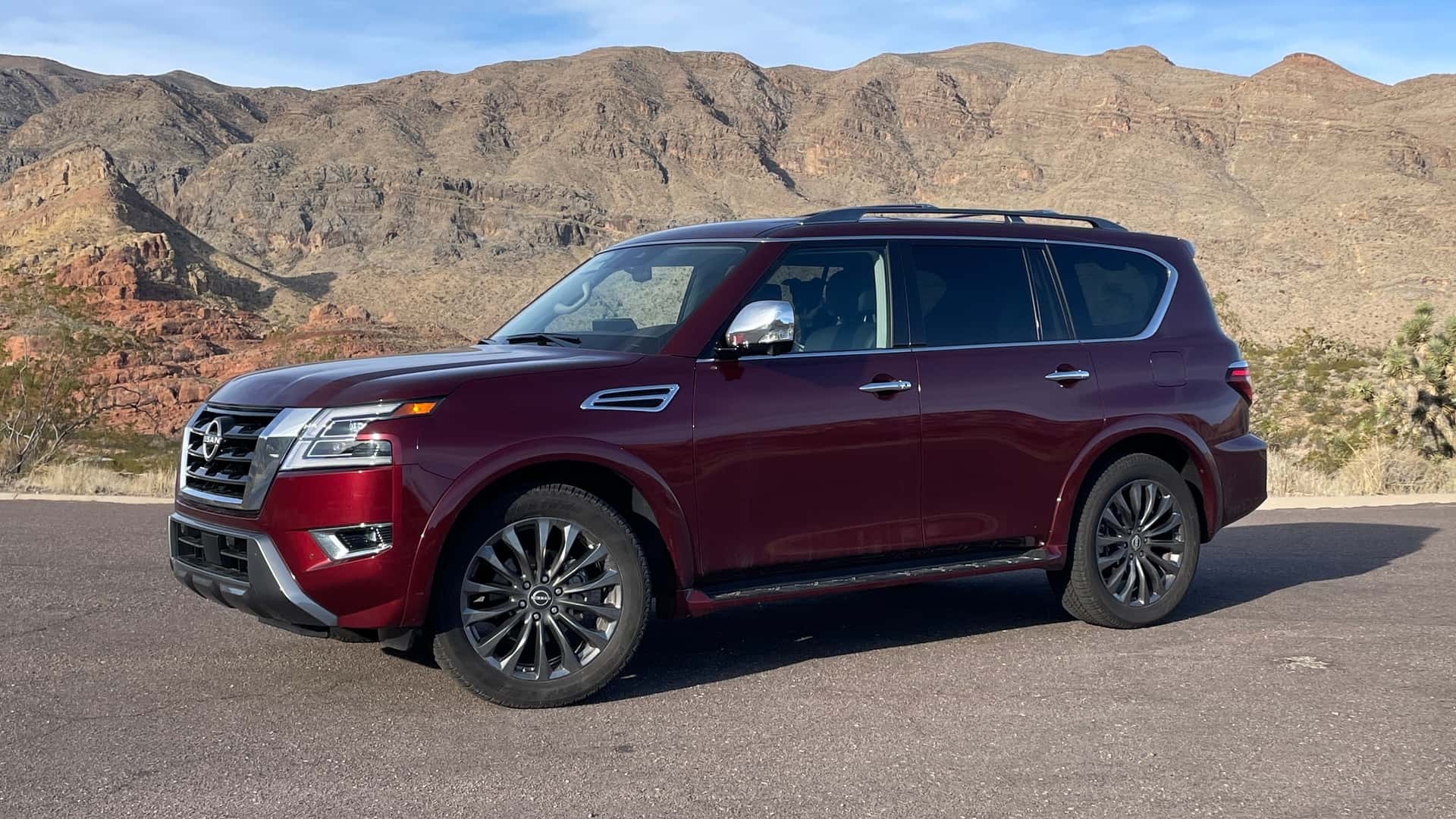
4. 2023 Nissan Armada
The Nissan Armada, while powerful and bold in size, continues to fall behind in electronic upgrades. The 2023 model shows slight improvements compared to older versions, but many users still feel that the technology feels outdated and unreliable. Compared to competitors, the Armada struggles to provide a polished digital experience.
The infotainment screen, measuring 12.3 inches, is not the problem when it comes to size. The real issue is the speed and performance of the system. Menus load slowly, and sometimes, the touchscreen takes a few seconds to register a tap. While that may seem small, it quickly becomes frustrating, especially during daily use.
Nissan’s software design also looks old-fashioned, which takes away from the luxury appeal the Armada is trying to offer. Drivers have mentioned that the map system lacks detailed visuals, and updating the navigation takes longer than expected. The entire interface feels stuck in an earlier decade, even though it is placed inside a new model.
Bluetooth and smartphone integration are inconsistent. Though the vehicle offers both Apple CarPlay and Android Auto, the connection is not always smooth. Calls may cut out, audio sometimes stutters, and voice commands struggle to pick up even simple instructions. Many users choose to avoid using the system and rely on their phone screens instead.
The gauge cluster in the Armada remains partly analog, which disappoints some drivers who expect full digital displays at this price point. Even though there is a small screen between the dials, it sometimes shows errors or restarts randomly.
Advanced safety features are included, but their reliability has been questioned. Parking sensors beep at the wrong time, and emergency braking occasionally activates when there’s no real danger. These electronic faults make the driving experience less relaxing and more stressful.
For a vehicle meant to handle both city driving and long trips, the Armada’s electronics create an experience that feels behind the times. Many buyers might appreciate the size and engine power, but the digital experience does not match what modern drivers expect.
Also Read: 5 Cars With Ideal Cup Holders and 5 With Awkward Holders
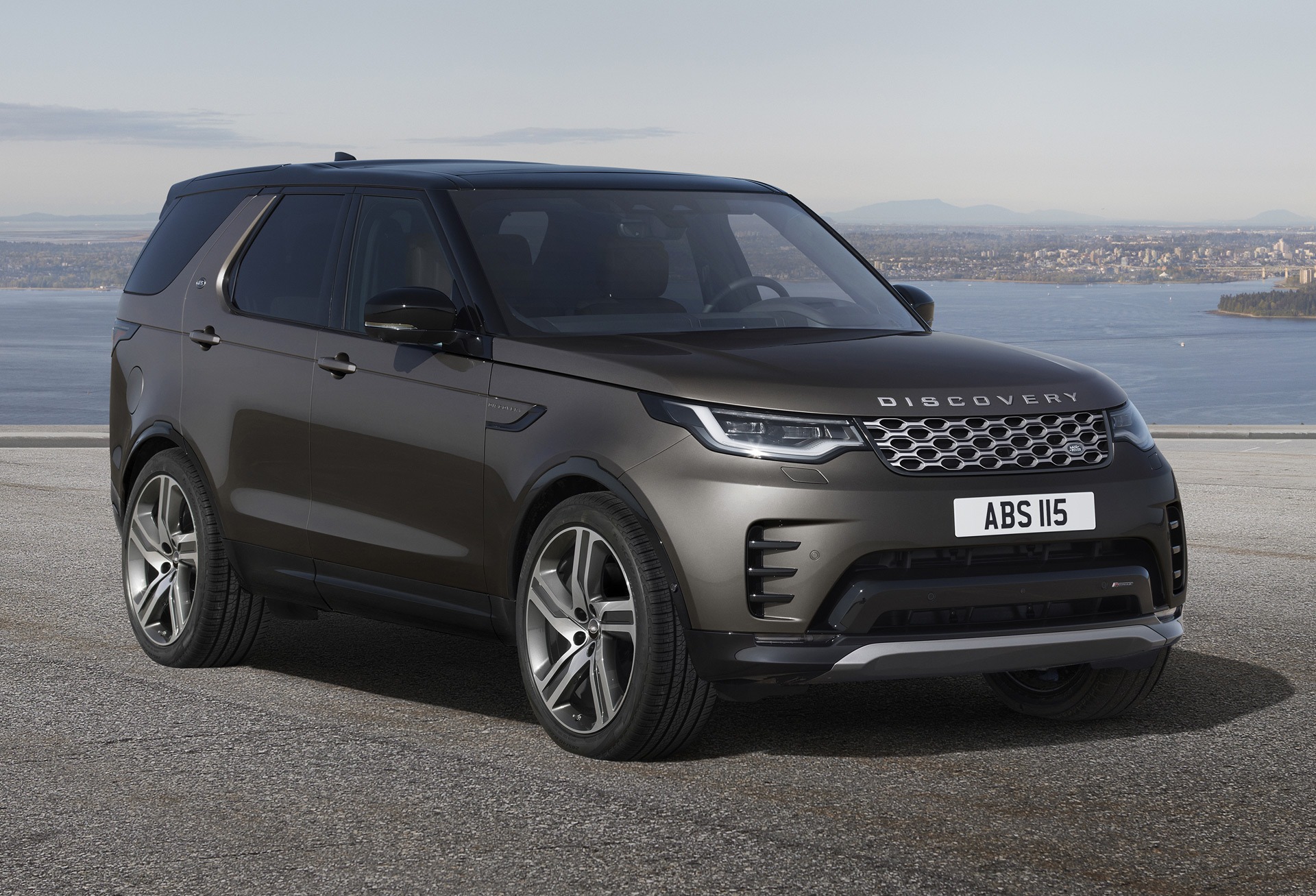
5. 2023 Land Rover Discovery
Land Rover has built a name around luxury and performance, but the 2023 Discovery struggles with the quality of its electronic systems. Though it comes with a premium price tag and high-end appearance, several owners have raised concerns about the software reliability and the behavior of the digital features.
At the center of the dashboard sits an 11.4-inch Pivi Pro infotainment system, which was designed to offer smooth and modern controls. However, it often behaves unpredictably. Drivers report delayed response, frozen screens, and system crashes while driving. These problems affect navigation, music playback, and Bluetooth usage.
Pairing a smartphone may work during setup, but several users say that the system forgets paired devices and has trouble reconnecting after the car is restarted. This creates a hassle for people who rely on hands-free calling or phone-based directions.
The digital instrument cluster also shows signs of inconsistency. There are times when information loads slowly or the system takes time to switch between views. Some users have even seen the display flicker, which should not happen in a vehicle of this class.
Voice recognition inside the Discovery is another weak point. While it should offer luxury-level convenience, many owners say it either mishears commands or fails to respond altogether. This turns a supposed benefit into a useless feature, especially while driving.
Even advanced safety systems have drawn mixed reactions. Drivers mention unexpected alerts, false warnings, and driver assist features that feel overly sensitive. Lane-keeping assist sometimes pulls the wheel too aggressively, and automatic braking can trigger in situations that don’t require it.
Updates are available over the air, but many owners complain that they fix one issue only to introduce another. Instead of improving the user experience, the changes sometimes bring new bugs, making the system feel unreliable.
The Land Rover Discovery still offers luxury materials and a smooth ride, but its electronics create too many disappointments. At this price point, buyers expect systems that work every time, not features they have to fight with.

